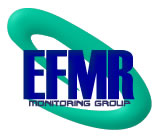Duxbury Reporter -
Duxbury selectmen to send letter to NRC
Letter to papers below
To Filter or Not to Filter That is the Question
Pilgrim,
like other GE Mark I reactors in the U.S., is the same design as the
failed Fukushima reactors. Almost forty years ago, the NRC identified a
serious design flaw in these reactors - in certain accident scenarios
where hydrogen and or steam pressure builds up the containment would
fail because the suppression chamber (enclosed area around the reactor
core) is too small. Fukushima proved NRC’s earlier prediction correct,
Units 1, 2 and 3 exploded and released unfiltered toxic radiation.
A supposed “fix” - a direct torus vent (DTV) to relieve excess
pressure - was recommended and put into place at Pilgrim and other
reactors, including Fukushima’s. But three major problems remained.
First, the vents were not filtered. Not having to pay for filters saved
the industry money, but left the public’s health and property at risk
because a release through the vent would be highly radioactive. The
second problem is whether plant operators will open the vent when
appropriate to do so At Fukushima the fear of what an unfiltered
release would do to those in the area surrounding the plants resulted in
the operators delaying opening the vents, and increased the risk of
catastrophic explosions and the widespread uncontrolled release of
radioactivity. Finally, and another lesson learned from Fukushima, when
the operators finally tried to open the vents, they failed. The vents
did not have a rupture disc - relatively thin sheets of steel that break
and allow venting automatically when the pressure reaches a specified
level, without the need for human intervention or moving parts.
Following Fukushima, the NRC asked its technical staff to advise the
Commission whether to require filters. After months of study, the staff
recommended that Pilgrim and all operators of GE Mark I and Mark II
reactors in the United States be ordered to install high capacity
radiation filters on containment vents. Such filters are already
deployed throughout Europe, and having learned its lesson the hard way,
they are soon to be installed in Japan. Not surprisingly, the nuclear
industry is adamantly opposed to spending the money to install filters.
The Commission will begin its deliberation process and is expected to
vote in early 2013 whether to accept their staff’s recommendation.
The Commission decision should be a no-brainer. Reactors like Pilgrim
are already required to filter the releases that occur daily in the
course of normal operation. There is no satisfactory explanation for
the fact that nuclear power plants such as Pilgrim are not required to
filter releases in the case of a severe accident when the amount of
radiation and threat to workers and the public is by far the greatest.
Direct Torus Vent filters are readily available. They have been tested
for over 3 decades of use in Sweden, and are in use today throughout
Europe.
Whether or not to require filters has a simple answer when you think
about it. We are required to filter our car’s tail pipe emissions but
Pilgrim is not required to filter its dangerous radioactive emissions in
a severe accident. It makes no “sense” but a lot of “cents” to the
industry.
How the NRC Commissioners vote early in January depends on whether
they listen to industry or you. Consider emailing the Commissioners at
NRCExecSec@nrc.gov reminding them that the Commission was formed to
protect public health and safety not industry’s pocketbooks.


